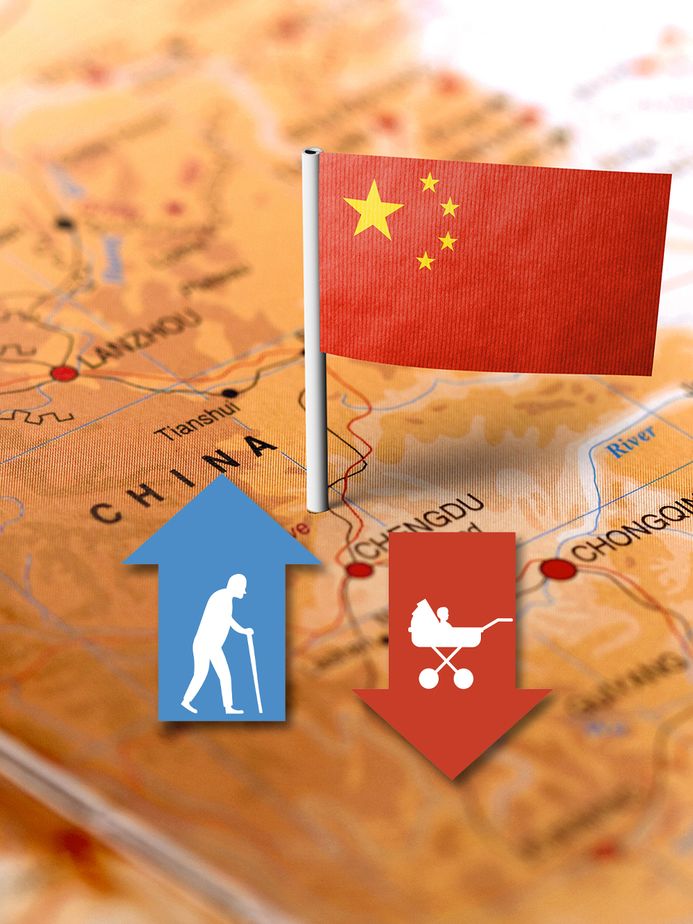
 China’s Continuing Population Crisis
China’s Continuing Population Crisis
Over the past decade, China has undergone a dramatic demographic shift. Once the world’s most populous nation, it is now facing a sustained population decline. In 2023 China recorded 9 million births and 11.1 million deaths, resulting in a net population loss of over 2 million people. By 2025, China’s fertility rate has plunged to around 0.9 births per woman, far below the replacement level of 2.1 and even below Japan or South Korea, countries long known for extremely low fertility rates. The number of births is expected to fall sharply from 9.54 million in 2024 to as low as 7.3-7.8 million in 2025. While China accounts for 17 percent of the world’s population, it now contributes less than 6 percent of all global births, about the same as Nigeria - though China has ten times Nigeria’s population. Deaths continue to exceed births, and demographers warn that the total population could fall below one billion by the end of the century if current trends persist.
What has caused the crisis?
- Falling Birth Rates: This trend began after 2016 and has accelerated despite the government’s reversal of its one-child policy. Even the introduction of a three-child policy in 2021 failed to boost birth numbers significantly. Young couples cite high living costs, intense academic pressure on children, and career priorities as reasons for delaying or avoiding parenthood.
- Aging Population. China’s population is aging rapidly. By 2035, over 30% of its citizens will be aged 60 or above. This demographic imbalance means fewer workers and more retirees. The shrinking labour force is already becoming a drag on economic productivity.
- Legacy of the One-Child Policy. Implemented in 1980 and relaxed only in recent years, the one-child policy created a generational gap. Millions of families now have only one child, leading to the “4-2-1” family structure - four grandparents, two parents, one child. This places immense caregiving and financial pressure on the younger generation. Even after the policy’s relaxation fertility did not rebound. Generational attitudes toward family, marriage and childbearing had changed permanently. Decades of preference for a male child and sex-selective abortions have led to a skewed gender ratio. Millions of men may remain unmarried.
- Urbanization and Lifestyle Shifts: As China urbanized, traditional family structures eroded. In cities, the cost of housing, education and childcare skyrocketed. Women, increasingly educated and career-oriented, are choosing to marry later or remain single.
- Unlike Western nations, China lacks a large-scale immigration policy to offset population decline.
There are as a result profound economic and social impacts:
- A shrinking workforce threatens China’s manufacturing and service sectors. With fewer workers and consumers, domestic demand weakens, and innovation may slow.
- Pension and Healthcare Strain: The aging population will require more medical care and pensions. Without sufficient young workers contributing to social security, the system risks becoming unsustainable. Rural areas, in particular, face shortages of eldercare services.
Is there a solution?
The Chinese Government is working hard to combat the problem with financial incentives for families, extended maternity leave, childcare subsidies, and campaigns promoting family values. The government faces a huge challenge to create a cultural shift that would make child-rearing more appealing and sustainable, while at the same time boosting productivity and embracing automation.
Demographer Wang Feng, a professor of sociology at the University of California, Irvine, fears that reversing China’s birth collapse will be “an uphill battle” with no quick policy fix.
Pray for wisdom for China's government in the face of this crisis.
Pray for Christians to model the Biblical pattern for families.
Pray for churches to minister to those caught up in this crisis.

